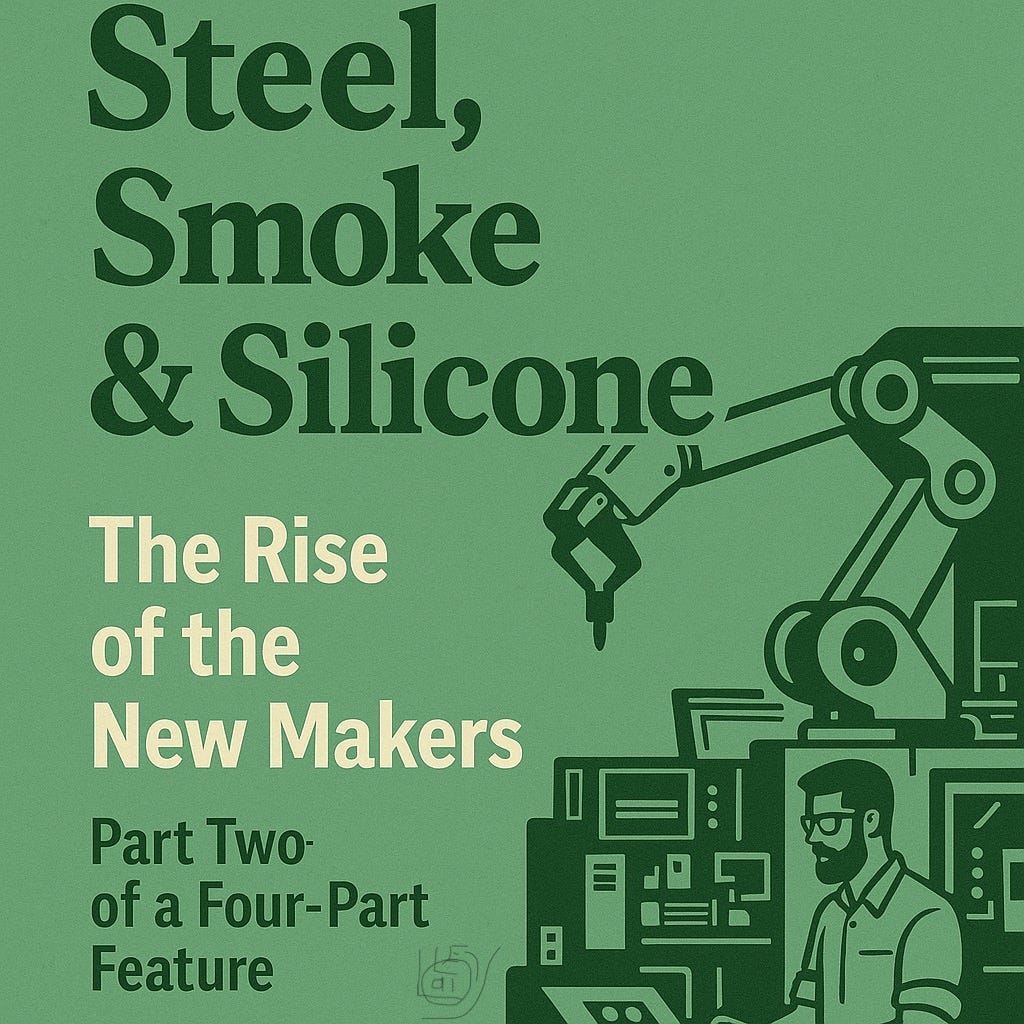Steel, Smoke and Silicone: The Rise of the New Makers- British Industry Fights Back
The Rise of the New Makers: British Industry Fights Back
Part Two of a Four-Part Feature on the Past, Present and Future of British Manufacturing
The Quiet Return of British Manufacturing
Whisper it softly, but something is stirring in the old industrial towns of Britain. Beneath the retail parks and tower blocks, behind the facades of boarded-up pubs and forgotten factories, a new kind of manufacturing is quietly taking root.
It is leaner. Smarter. More ambitious.
And crucially, it is British.
We are not talking about nostalgia. We are talking about reinvention. In this part, we explore the real-world revival underway right now. From a plastics powerhouse in Accrington to a precision engineering firm deep in the heart of Birmingham, these companies are not just surviving. They are setting the pace.
WHAM: The Plastic Box Revolution
Let us start in East Lancashire. WHAM, short for What More UK, operates in a world that most people never think about. Plastic storage boxes. Buckets. Dish drainers. The sort of items you toss into your trolley without a second thought.
But behind those supermarket shelves lies a factory floor that would not look out of place in a German tech park. Robotics. Laser measurement. High-speed moulding. Automation so precise that in some departments, you could hear a pin drop between cycles.
And here is the miracle. WHAM is not just making plastic. It is beating China at its own game. Not because its workers are paid less. Not because it cuts corners. But because its kit is sharper, its tolerances tighter, and its standards higher. WHAM is producing in Britain, for the world. And doing it profitably.
This is not low-grade commodity churn. It is modern, resilient, high-efficiency production. And it is happening in Accrington.
Birmingham’s Hidden Gem: Brandauer
Now head down to Birmingham. The Jewellery Quarter, to be exact. There you will find Brandauer, a company with Victorian roots and a space-age future.
Once world-famous for its pen nibs, Brandauer today is among Europe’s most advanced precision pressers. Their components are small, often delicate, but used in some of the most demanding environments on Earth. Satellites. Medical tech. Electric vehicles. Every part made to microscopic tolerances.
This is not a company living off its heritage. It is exporting to the most advanced economies on the planet. Brandauer’s new leadership understands what it takes to thrive in the modern world. Investment in apprenticeships. Digital tooling. Automation. Clean rooms. Supply chain integration.
They are not tinkering around the edges. They are building a future.
From Brum to Berlin, their parts are embedded in global systems.
A Workforce Worth Fighting For
Talk of machines often drowns out the human story. But a healthy industrial base needs a healthy population.
We failed at that before. One of the reasons for Britain’s past industrial weakness was simple. We were not well. Smoking, drinking, bad diets, little exercise. Men wore out like their machines. And when the body breaks down, so does the economy.
Now look at China. A country that built its dominance on labour abundance and low cost is now facing a crisis. An ageing workforce. Poor public health. Physical burnout. The model is cracking. What powered China’s rise may soon slow it down.
Britain has a different choice. We can learn. We can invest in health. We can treat workers as assets, not overheads. Fair pay, proper training, strong wellbeing. This is not charity. It is smart economics.
Robots and Humans: Not Enemies, But Allies
There is fear around automation. That robots will take all the jobs. That humans will be pushed out of the factory entirely.
The truth is more complex, and more hopeful.
WHAM and Brandauer show us that automation does not replace people, it empowers them. Machines do the heavy lifting. The dangerous work. The grinding repetition. People do what only people can do. Innovate. Solve problems. Think.
This is not about removing the human. It is about freeing the human. Let machines do the predictable. Let people lead the progress.
The New Model Factory
Another myth must go. The idea that factories are still Dickensian dungeons of soot and sweat.
Walk the floor at WHAM or Brandauer and you will find the opposite. Clean, bright, efficient spaces. Skylights and data screens. Organised workstations. The smell of progress, not paraffin.
This is not a relic of a dying past. This is the shape of a thriving future.
And with that transformation comes something deeper. The chance to reframe how we think about industry. Not as grim necessity. But as pride, craft and innovation.
Lessons From Success
What ties these companies together? What makes them more than lucky survivors?
First, they are run by people who understand process, not just profit. They know what their machines do. They invest in improvement. They treat employees like partners.
Second, they are agile. They do not try to beat the world on cost alone. They compete on quality, speed, reliability. That is where modern Britain can win.
And third, they believe. They believe in making things. In building value. In doing the job right.
It is a mindset as much as a model. And it is one the rest of the country would do well to study.
Next: The Future is Thinking
So where does all this lead? If we have rediscovered the will to build, what happens when the tools begin to think?
That is the question we take up in Part Three.
Not the fantasy of sentient machines. Not the buzzwords. But the real and present shift that is already reshaping how we design, manufacture and deliver.
Artificial Intelligence. Digital twins. Autonomous production.
If Britain wants to lead again, we must face this future with open eyes, steady hands and a clear industrial purpose.
See you in Part Three.




Great to read such a positive piece about UK manufacturing